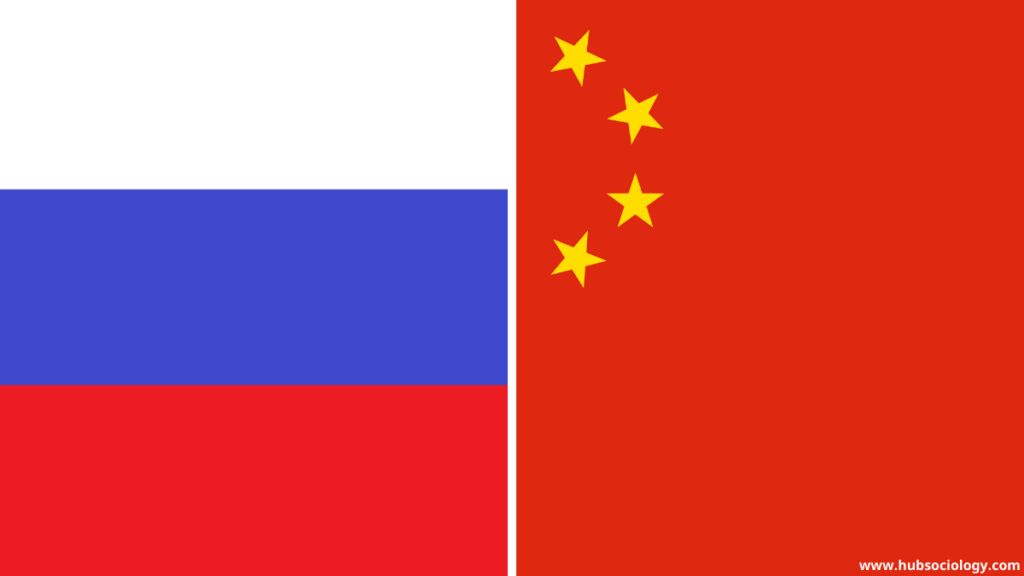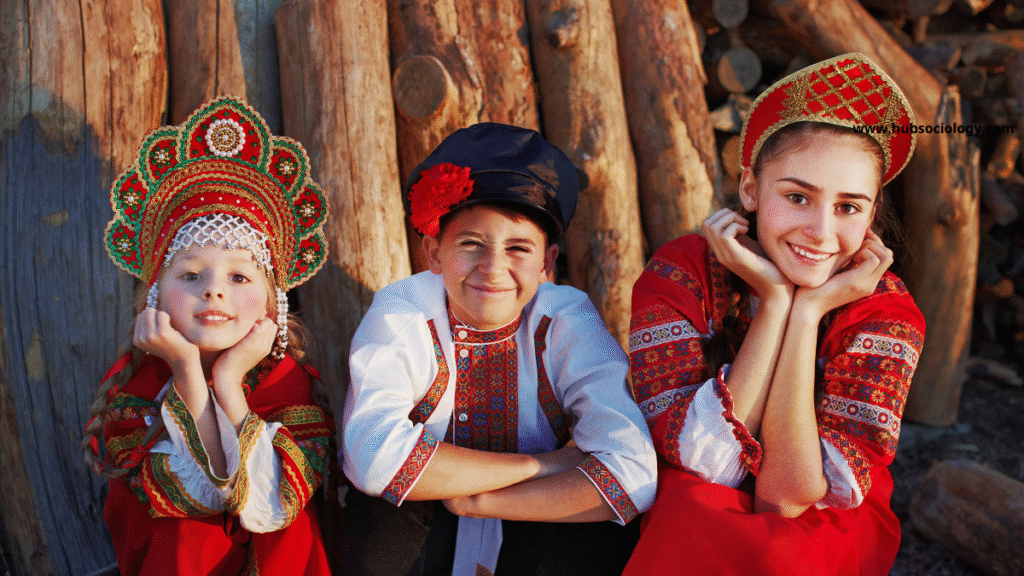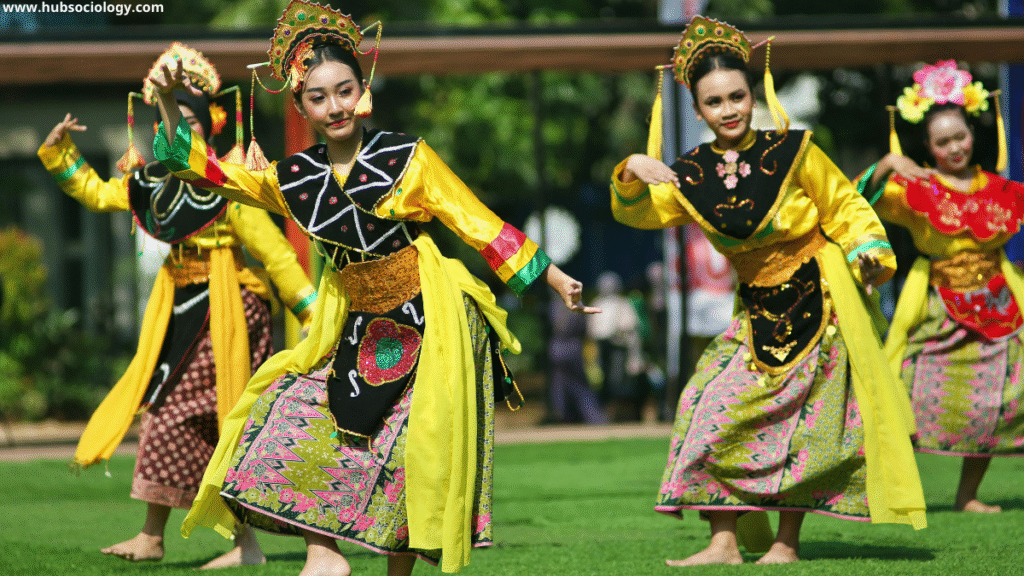Introduction on Russia vs China in Central Asia
Central Asia, a vast region comprising Kazakhstan, Kyrgyzstan, Tajikistan, Turkmenistan, and Uzbekistan, occupies a crucial position in global geopolitics. Nestled between Russia, China, South Asia, and the Middle East, the region has historically been a crossroads of trade, culture, and imperial ambitions. Today, Central Asia finds itself at the centre of strategic competition between Russia and China, two great powers with different but overlapping interests. While this contest is often analysed through political and economic lenses, a sociological perspective reveals deeper insights: the ways in which geopolitics shapes societies, identities, migration, culture, and everyday life.
This article explores the geopolitical rivalry between Russia vs China in Central Asia, focusing on how it impacts societal structures, cultural dynamics, social mobility, migration, identity, and local communities. By combining sociology with geopolitics, we uncover the lived realities of Central Asian populations caught in this geopolitical balancing act.

Table of Contents
Historical Context: Imperial Legacies and Social Structures
Central Asia has long been subject to foreign influence. Under the Russian Empire and later the Soviet Union, Central Asia was politically integrated and culturally transformed. Russian policies reshaped local societies: collectivization altered nomadic lifestyles, Russian language became dominant in education and administration, and ethnic hierarchies were reconfigured.
The Soviet legacy persists in multiple sociological forms:
- Language and Identity: Russian remains a lingua franca in many parts of Central Asia, shaping education, employment, and elite networks.
- Migration Systems: Millions of Central Asians still migrate to Russia for work, sustaining family economies and creating transnational ties.
- Cultural Ties: Shared Soviet experiences influence generational memory and social values.
In contrast, China’s influence is newer. Its involvement accelerated after the collapse of the Soviet Union, especially through trade, investment, and infrastructure projects under the Belt and Road Initiative (BRI). Unlike Russia, China has no deep colonial legacy in the region, but its growing presence generates both opportunities and anxieties.
Russia’s Sociological Influence in Central Asia
Russia continues to exert strong soft power and sociological influence in Central Asia through several channels:
- Labor Migration
- Millions of Central Asians (especially from Kyrgyzstan, Tajikistan, and Uzbekistan) migrate to Russia annually for work.
- Remittances form a large share of GDP in their home countries.
- Sociologically, this creates transnational families, changes gender roles (with women often managing households in the absence of men), and alters community structures.
- Cultural and Educational Ties
- Russian universities attract thousands of Central Asian students.
- Russian-language media remains influential.
- This shapes identity politics: speaking Russian is associated with higher social status and mobility.
- Security and Military Presence
- Through the Collective Security Treaty Organization (CSTO), Russia positions itself as a security guarantor.
- This influences societal perceptions of safety and reinforces the idea of Russia as a “protector.”

However, Russian influence is also contested. Nationalist movements in Central Asia encourage linguistic revival and cultural decolonization, particularly among younger generations. Many Central Asians resent the perception of being treated as second-class citizens in Russia.
China’s Sociological Influence in Central Asia
China’s growing role in Central Asia is mostly economic, but it carries deep sociological consequences:
- Infrastructure and Development
- Through the Belt and Road Initiative, China has built roads, railways, and pipelines.
- This reshapes local economies and alters class structures by creating new elites tied to Chinese capital.
- Trade and Markets
- Chinese consumer goods flood Central Asian markets, influencing everyday consumption patterns.
- This transforms cultural practices: from clothing styles to food habits.
- Cultural Exchange and Education
- Confucius Institutes and scholarships promote Chinese language and culture.
- Yet, Chinese influence is less socially internalized than Russian, facing skepticism due to historical stereotypes and fears of domination.
- Ethnic and Security Issues
- China’s treatment of Uyghurs in Xinjiang deeply affects Central Asian societies, given ethnic, religious, and kinship ties across borders.
- This creates social tensions, particularly among Muslim communities in Kyrgyzstan and Kazakhstan.

Comparative Sociological Analysis: Russia vs China
From a sociological lens, Russia and China’s approaches differ fundamentally:
- Russia’s Influence is cultural and social, rooted in historical legacies of empire, shared Soviet experience, and migration. It directly shapes language, identity, class mobility, and transnational family structures.
- China’s Influence is economic and structural, reshaping consumption patterns, class hierarchies, and infrastructure-based social change. It is more material but less embedded in daily identity.
This distinction explains why Russia feels closer to Central Asian societies despite its declining economic power, while China feels distant even though it is the region’s largest trading partner.
Social Mobility and Migration on Russia vs China in Central Asia
A central sociological outcome of this geopolitical rivalry lies in migration and mobility.
- Toward Russia: Migration to Russia offers employment opportunities but also reinforces dependency. Migrants face racism, legal vulnerabilities, and social stigma, which shape perceptions of dignity and identity.
- Toward China: Migration to China is limited but growing. However, cultural and linguistic barriers restrict integration. Central Asians often perceive China as economically powerful but socially alien.
Migration creates a new class of transnational Central Asians whose lives are deeply influenced by geopolitical ties. These individuals act as bridges between societies, but also as reminders of unequal power dynamics.
Identity Politics and Cultural Change
The rivalry between Russia and China also intersects with identity formation in Central Asia:
- Language Hierarchies:
- Russian remains dominant in higher education and elite professions.
- China promotes Mandarin, but uptake is slower due to cultural distance.
- Generational Divides:
- Older generations with Soviet experience feel closer to Russia.
- Younger generations, increasingly nationalist and exposed to global media, question Russian dominance but remain cautious toward China.
- Religious Identity:
- Islam is resurging in the region.
- Russia is seen as secular but familiar, while China is viewed as repressive toward Muslims.
- This creates religio-cultural skepticism toward China’s growing presence.
Everyday Life under Geopolitics
Geopolitical competition is not abstract; it permeates everyday life in Central Asia:
- Markets filled with Chinese goods reflect China’s dominance in trade.
- Russian television channels and social media shape public discourse.
- Migrant remittances fund weddings, education, and local businesses.
- Public debates question whether Central Asia should lean toward Moscow, Beijing, or pursue independence.
Sociologically, Central Asia is experiencing a hybrid social order: Russian cultural legacies coexist with Chinese economic infrastructures, producing both integration and tension.
Civil Society and Resistance on Russia vs China in Central Asia
Local societies are not passive recipients of external power. Civil society organizations, intellectuals, and youth movements articulate critical perspectives:
- Anti-colonial Narratives: Calls for linguistic and cultural revival challenge Russia’s lingering dominance.
- Anti-China Protests: In Kazakhstan and Kyrgyzstan, protests have erupted over land leases to Chinese companies and fears of debt dependency.
- Nationalism: Central Asian states use nationalism to balance external powers, promoting indigenous culture while negotiating with both Russia and China.
Thus, societal agency plays a role in reshaping the geopolitical rivalry.
Sociological Consequences of Russia–China Rivalry
The Russia–China competition in Central Asia has broad sociological consequences:
- Dual Dependency: Societies oscillate between Russian cultural dominance and Chinese economic dependency.
- Social Stratification: Elites tied to Russian institutions differ from elites tied to Chinese projects, producing new class divisions.
- Transnational Families: Migration to Russia creates families spread across borders, changing gender and kinship dynamics.
- Identity Conflicts: Younger generations struggle between nationalist revival and the practical need to engage with Russian and Chinese powers.
- Cultural Hybridization: Central Asia develops a hybrid identity influenced by both neighbors, but with strong local resistance.
Future Prospects: Toward a Multipolar Society?
Looking ahead, the societal implications of Russia–China rivalry will depend on several factors:
- If Russia weakens economically but maintains cultural influence, Central Asia may lean on China for development while still identifying with Russian legacies.
- If China increases its cultural outreach, future generations may internalize Chinese influence more deeply.
- Central Asia may also diversify by engaging with Turkey, the West, or regional cooperation (e.g., the Shanghai Cooperation Organization).
From a sociological standpoint, the future is not merely about state power but about how ordinary Central Asians negotiate identities, opportunities, and cultural belonging.
Conclusion on Russia vs China in Central Asia
The rivalry between Russia and China in Central Asia is not just a geopolitical struggle; it is a sociological transformation that shapes migration, identity, class structures, and cultural life. Russia maintains strong social and cultural bonds, rooted in history, language, and migration networks. China reshapes societies through economic and infrastructural power, altering consumption patterns and class dynamics.
For Central Asians, this rivalry is lived daily—in workplaces, families, marketplaces, and cultural debates. The region’s societies are not passive but actively respond, adapt, and resist external pressures. Ultimately, the sociological dimension reveals that geopolitics is not only about power between states but also about the lived realities of people navigating overlapping spheres of influence.
Central Asia, once a crossroads of empires, remains so today—where Russia and China compete not just for territory and resources, but for the hearts, minds, and lives of its people.
FAQs on Russia vs China in Central Asia
1. Why is Central Asia important in the context of Russia vs China in Central Asia?
Central Asia is strategically located between Russia, China, South Asia, and the Middle East. It holds vast energy resources, trade routes, and cultural significance, making it a key region where Russia and China compete for influence.
2. How does Russia influence Central Asia compared to China?
Russia influences Central Asia primarily through cultural ties, migration, language, and security agreements. China, on the other hand, influences the region through trade, infrastructure, and economic investments under the Belt and Road Initiative.
3. What role does labor migration play in Russia vs China in Central Asia?
Labor migration strengthens Russia’s social and cultural ties with Central Asia, as millions of Central Asians work in Russia. China attracts fewer migrants but impacts local societies through investments and development projects.
4. How do Central Asian societies view Russia vs China in Central Asia?
Central Asians often see Russia as culturally familiar but economically weaker, while China is viewed as economically powerful but socially distant. This creates mixed perceptions and cautious balancing by local communities.
5. What are the sociological effects of Russia vs China in Central Asia?
The rivalry affects identity, language use, migration patterns, class stratification, and cultural hybridization. It creates a dual dependency—Russian cultural dominance alongside Chinese economic influence.
6. How does religion shape the dynamics of Russia vs China in Central Asia?
Religion plays a role in shaping perceptions. Russia is seen as a secular but historically linked power, while China faces criticism for its treatment of Muslim Uyghurs. This leads to greater skepticism toward China among Central Asian Muslims.
7. What challenges arise from Russia vs China in Central Asia for local societies?
Challenges include identity conflicts, dependency on external powers, social inequality due to elite ties with foreign actors, and public resistance to foreign dominance. Nationalism and cultural revival movements reflect these tensions.
8. How does the Belt and Road Initiative affect Russia vs China in Central Asia?
The Belt and Road Initiative (BRI) expands China’s presence in Central Asia through infrastructure and trade, challenging Russia’s traditional dominance. It reshapes local economies and creates new social classes tied to Chinese projects.
9. What is the future of Russia vs China in Central Asia?
The future depends on whether Central Asia continues to rely on Russia for cultural ties and migration or shifts more toward China for economic development. A multipolar balance with Turkey, the West, and regional cooperation is also possible.
10. How do Central Asian youth perceive Russia vs China in Central Asia?
Younger generations are more nationalistic and skeptical of Russian dominance but remain wary of China’s influence. They often seek new identities, blending local traditions with global opportunities beyond Russia and China.
